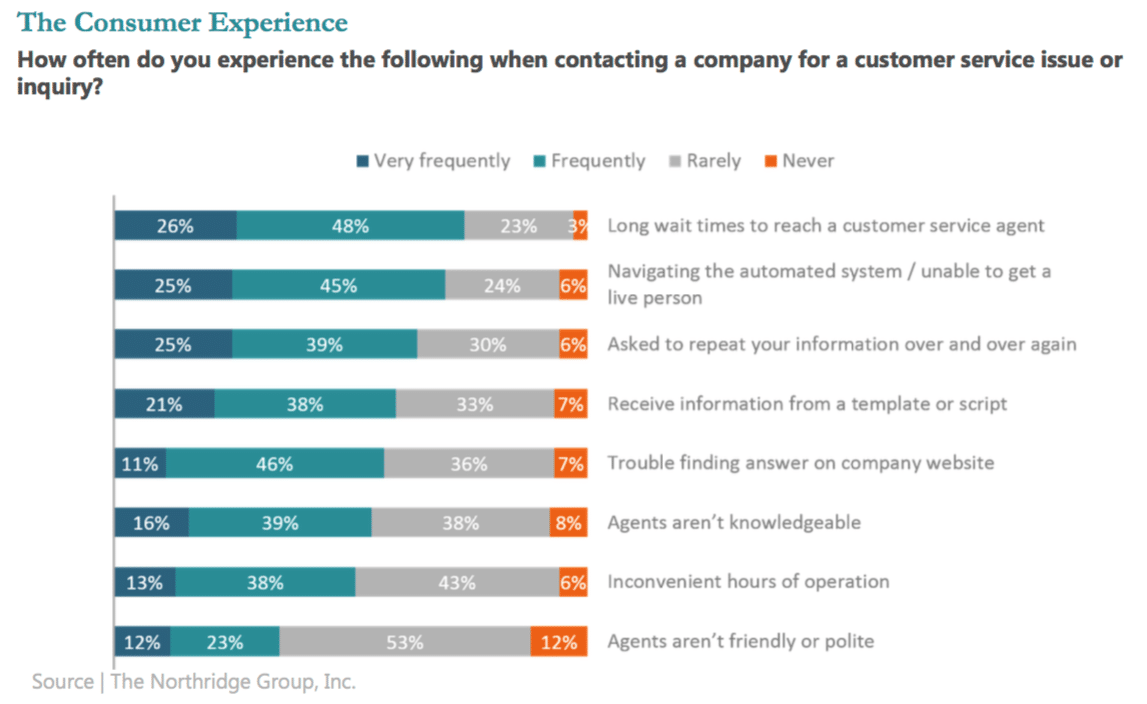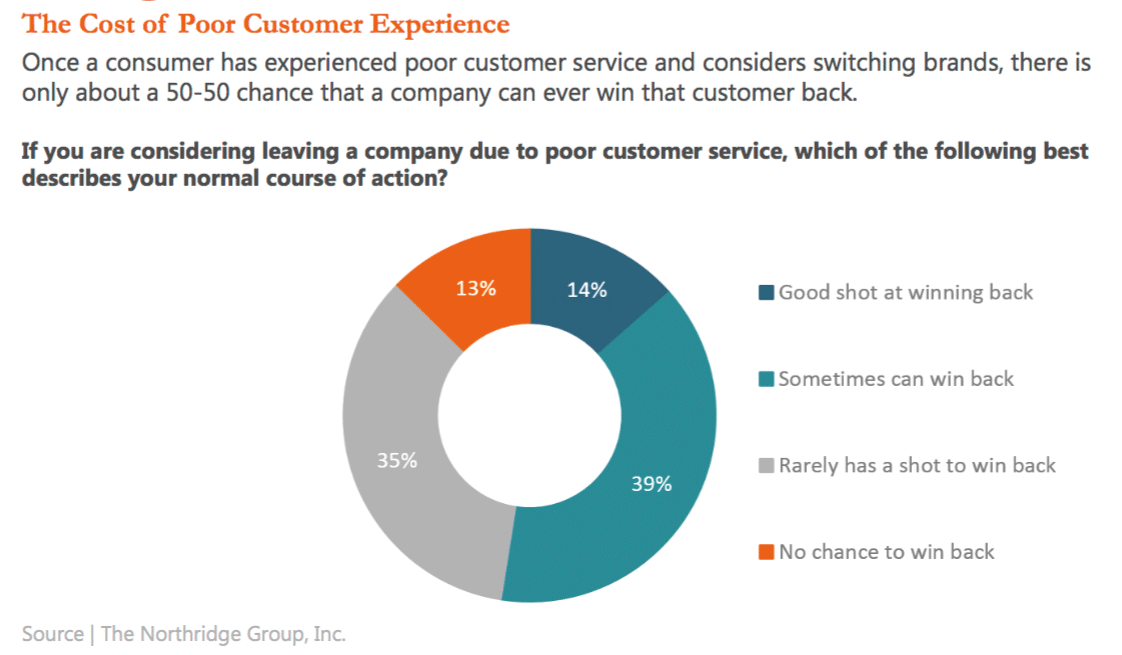Regardless of the many ways today’s consumers can reach out to companies for service, most are still not feeling the love, new research confirms.
The Northridge Group’s new State of Customer Service Experience 2017 report, its third annual survey of more than 1,000 U.S. respondents, reveals that consumers are increasingly frustrated by how much effort is required to get the help they need from companies:
- At least 50 percent of consumers say they do not feel companies make it easy to contact them.
- While most consumers still prefer the phone for mission-critical issues, more than 70 percent experience long wait times and have trouble navigating the automated system to reach a live agent.
- As consumers migrate to digital channels, 57 percent of consumers frequently have trouble finding answers on a company’s website.
- And despite social media increasing as a preferred channel among consumers, 25 percent never even receive a response when they contact a company through social media. That’s up from 21 percent in 2016.

Companies are leaving money on the table—and risking brand reputation
“Seems like many companies have missed the memo on the importance of a well-executed, customer-centric service model and the business costs are real,” said Pam Plyler, executive practice lead of customer experience at The Northridge Group, in a news release. “More than half of consumers we surveyed (51 percent) say they’re willing to spend more with a company that provides an excellent customer experience. Yet 64 percent of those same consumers report frustration about being asked to repeat their information to customer service representatives multiple times, and 35 percent say they frequently experience service agents who are impolite and unfriendly.
“The financial repercussions are hard to ignore, with 81 percent of consumers reporting they’d likely stop doing business with a company after a poor service experience, and of those unhappy consumers, only half (53 percent) may return,” added Plyler.

The majority of those surveyed (60 percent) report sharing their unpleasant customer service interaction with family and friends. “It’s a simple concept. By making it easier for customers to efficiently connect with businesses about service issues, companies can significantly increase customer satisfaction, protect brand reputation, reduce costs and grow profitability,” said Plyler.
Companies that invest in digital will win
While some channels like email are declining in use for customer service, other digital technologies are emerging to fill the gap between existing tools and evolving customer needs. In fact, about half of consumers are likely to use an Interactive Virtual Assistant (IVA) to contact a company in the coming year.
“Companies have a vested interest in staying in sync with evolving customer service technology and getting the design and delivery of digital channels right,” said Daren Moore, president of The Northridge Group, in the release. “As consumers move from traditional phone to digital channels and other emerging technologies to get the help they need, companies that focus on channel usability and ease of resolution will have a distinct competitive advantage.”




